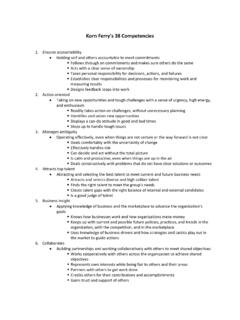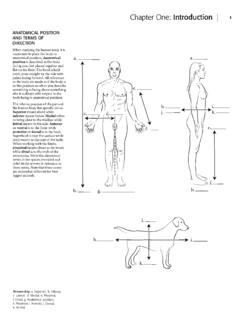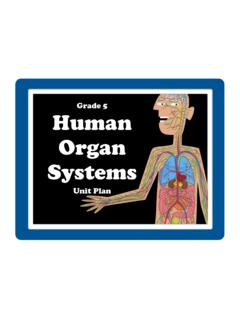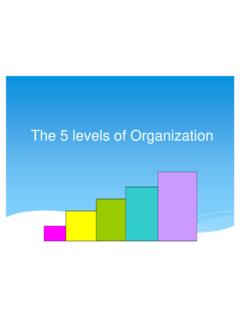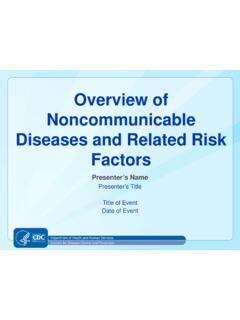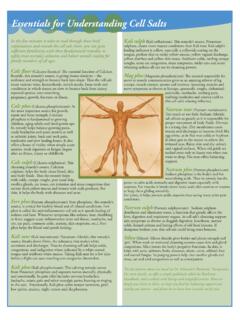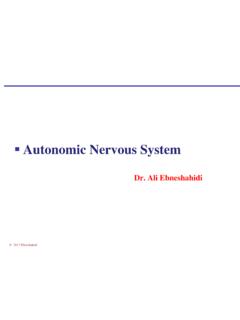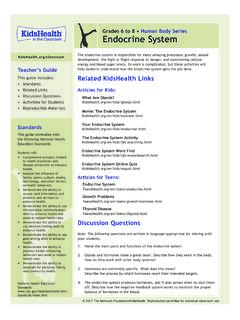Transcription of Interactions of Human Body Systems - .NET Framework
1 Copyright Glencoe/McGraw-Hill, a division of The McGraw-Hill Companies, body has a system to keep its internal temperature constant. That system works much like a thermostat that keeps a building s temperature constant. The endocrine system regulates body temperature. It sends messages through the nervous example, when temperatures in the body fall below 37 C, the nervous system signals the muscular system to cause the body to shiver. When you shiver, your muscles move. Tiny muscles attached to hairs on the skin contract and pull the hairs up straight, forming goose bumps. This movement generates thermal energy and helps raise body temperature. Keeping the body s temperature constant requires that the endocrine system , the nervous system , and the muscular system work body s organ Systems work together and maintain many types of homeostasis (hoh mee oh STAY sus).
2 These include temperature, nutrient levels, oxygen, fluid levels, and pH. Homeostasis is the ability to maintain constant internal conditions when outside conditions change. In this lesson, you will read how organ Systems work together and maintain do you think? Read the three statements below and decide whether you agree or disagree with them. Place an A in the Before column if you agree with the statement or a D if you disagree. After you ve read this lesson, reread the statements to see if you have changed your Nutrients are processed by the skeletal The nervous system moves oxygen through the You do not control Concepts How are nutrients processed in the body ? How does the body transport and process oxygen and wastes?
3 How does the body coordinate movement and respond to stimuli? How do feedback mechanisms help maintain homeostasis?3 TUDY #OACHI dentify the Main Ideas Work with a partner. Read a paragraph together. Then discuss what you learned in the paragraph. Continue until you and your partner understand the main ideas of the of Human body SystemsHow body Systems InteractSCIENCE USE V. COMMON USEorganScience Use a group of tissues performing a specific functionCommon Use a keyboard instrument in which pipes are sounded by compressed airReading Essentials Interactions of Human body Systems 72/8/10 3:03:13 PM2/8/10 3:03:13 PMCopyright Glencoe/McGraw-Hill, a division of The McGraw-Hill Companies, Inc. Reading Check 1. Locate Where are muscles found in the digestive system ?
4 Processing NutrientsMaintaining homeostasis keeps the internal environment in the body functioning properly. Many organ Systems work together and maintain energy homeostasis. The body gets most of its energy from carbohydrates. Lipids and proteins also provide energy. The food you eat is broken down by chemical and mechanical digestion. Chemical digestion occurs when enzymes in saliva and acid in your stomach break down food. Mechanical digestion happens when you chew your food. The digestive system , the circulatory system , and the muscular system work together and process and obtain nutrients from food. The skeletal system , the endocrine system , and the lymphatic system also work with the digestive system and process those and DigestionFood enters the body through the digestive system .
5 There it is broken down into nutrients that can be absorbed into the body . However, the muscular system is needed to get food through the digestive system . Muscles that surround the stomach contract and move food to the small intestine. These contractions are called peristalsis (per uh STAHL sus).Muscles help the jaw move when you chew. They help you swallow. Muscles also surround the esophagus, the stomach, the small intestine, and the large intestine. These muscles help move food through the digestive system . Circulation and DigestionThe small intestine has two important jobs. It breaks down food and absorbs nutrients. The muscular system and the circulatory system work with the small intestine. The muscular system helps the small intestine break down food.
6 The circulatory system works with the small intestine and gets nutrients to the rest of the body . Nutrients are absorbed by small, fingerlike projections called villi (VIH li; singular, villus) in the small intestine. The villi have blood vessels inside them, which are part of the circulatory system . Nutrients enter these blood vessels and are then transported to the rest of the body . The muscular system also surrounds the blood vessels and helps blood and nutrients move through the body . The figure on the next page shows a close look at one villus and how the digestive system and the circulatory system work together. Key Concept Check 2. Describe How are nutrients processed in the body ? 390 Interactions of Human body Systems Reading 82/8/10 3:03:17 PM2/8/10 3:03:17 PMCopyright Glencoe/McGraw-Hill, a division of The McGraw-Hill Companies, Oxygen and WastesThe Systems of the Human body must work together for the body to function properly.
7 For example, humans require oxygen to survive. Your lungs take in oxygen and release carbon dioxide. The cells in your body use oxygen to help process the energy in nutrients into energy that cells can use. Oxygen helps the body obtain energy from nutrients by performing cellular respiration. As discussed next, various organ Systems work together and help the body take in oxygen and move it through the body . Oxygen Transport Oxygen enters the body through the respiratory system . When you inhale, the respiratory system works with the circulatory system and transports oxygen to all cells in the body . The muscular system also helps the respiratory system by expanding the chest so that cells in the lungs fill up with Check3. Identify What does each villus contain?
8 Absorbing NutrientsLiverGallbladderPancreasSmallin testineBloodvesselsLymphvesselOne villusFolds in small intestinecovered with villiReading Essentials Interactions of Human body Systems 92/8/10 3:03:25 PM2/8/10 3:03:25 PMCopyright Glencoe/McGraw-Hill, a division of The McGraw-Hill Companies, that the circulatory system works with the small intestine and moves nutrients into the body . The circulatory system also works with the lungs and helps oxygen travel through the body , as shown in the figure above. Oxygen that is taken in by capillaries is transported to the rest of the body through larger blood WastesThe excretory system works with several other organ Systems and eliminates wastes. Recall that the body processes food, oxygen, and liquids.
9 Food and liquids are processed by the digestive system . After nutrients are absorbed during digestion, the excretory system removes solid waste products, or feces, through the excretory system also works with the respiratory and circulatory Systems and removes carbon dioxide (CO2) from the body . Oxygen is used in all organs of the body . The CO2 produced by cells in the body enters capillaries and is transported to the lungs, where it is exhaled. These three Systems work together and maintain oxygen homeostasis by making sure that CO2 is removed. The excretory system also maintains fluid homeostasis. Liquid waste travels through the circulatory system to the kidneys, as shown in the figure on the next page. The kidneys make urine. Liquid waste also travels to the skin where fluid is released during sweating.
10 Visual Check4. Name What do capillaries release? Key Concept Check 5. Relate How does the body transport and process oxygen and wastes? Transporting OxygenMouthNosePharynxLarynxTracheaBronc hiLungsDiaphragmBronchioleAlveoliBloodfl owBlood flowCapillarynetworkon surfaceof alveolusBloodflowAir inalveolus CapillaryCO2O2392 Interactions of Human body Systems Reading 102/8/10 3:03:28 PM2/8/10 3:03:28 PMCopyright Glencoe/McGraw-Hill, a division of The McGraw-Hill Companies, Inc. Key Concept Check7. Explain How does the body coordinate movement and respond to stimuli?Visual Check6. Interpret How are wastes transported to the kidneys? Control and CoordinationHow does your heart beat without you thinking about it? The heart contains a group of specialized cells called pacemaker cells.
